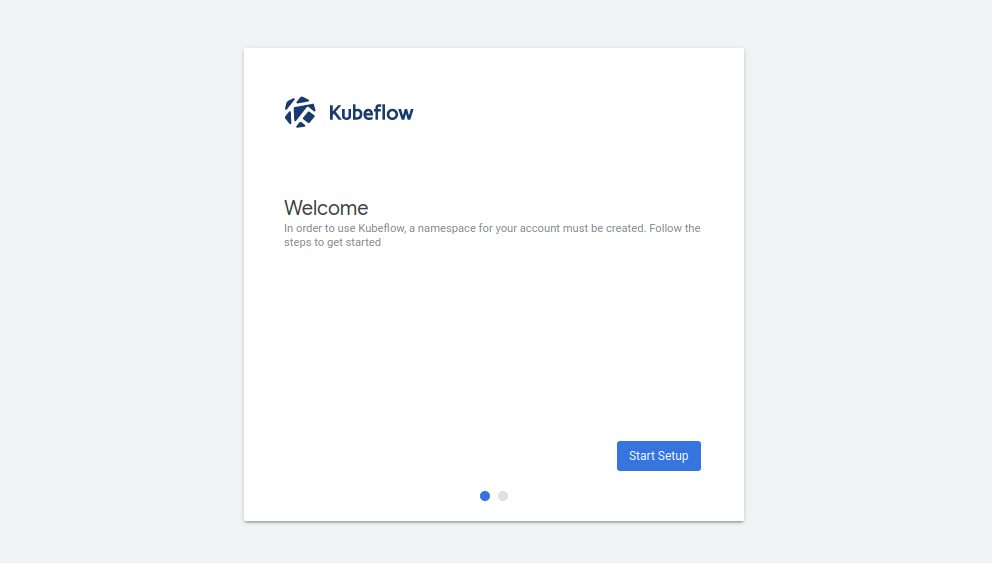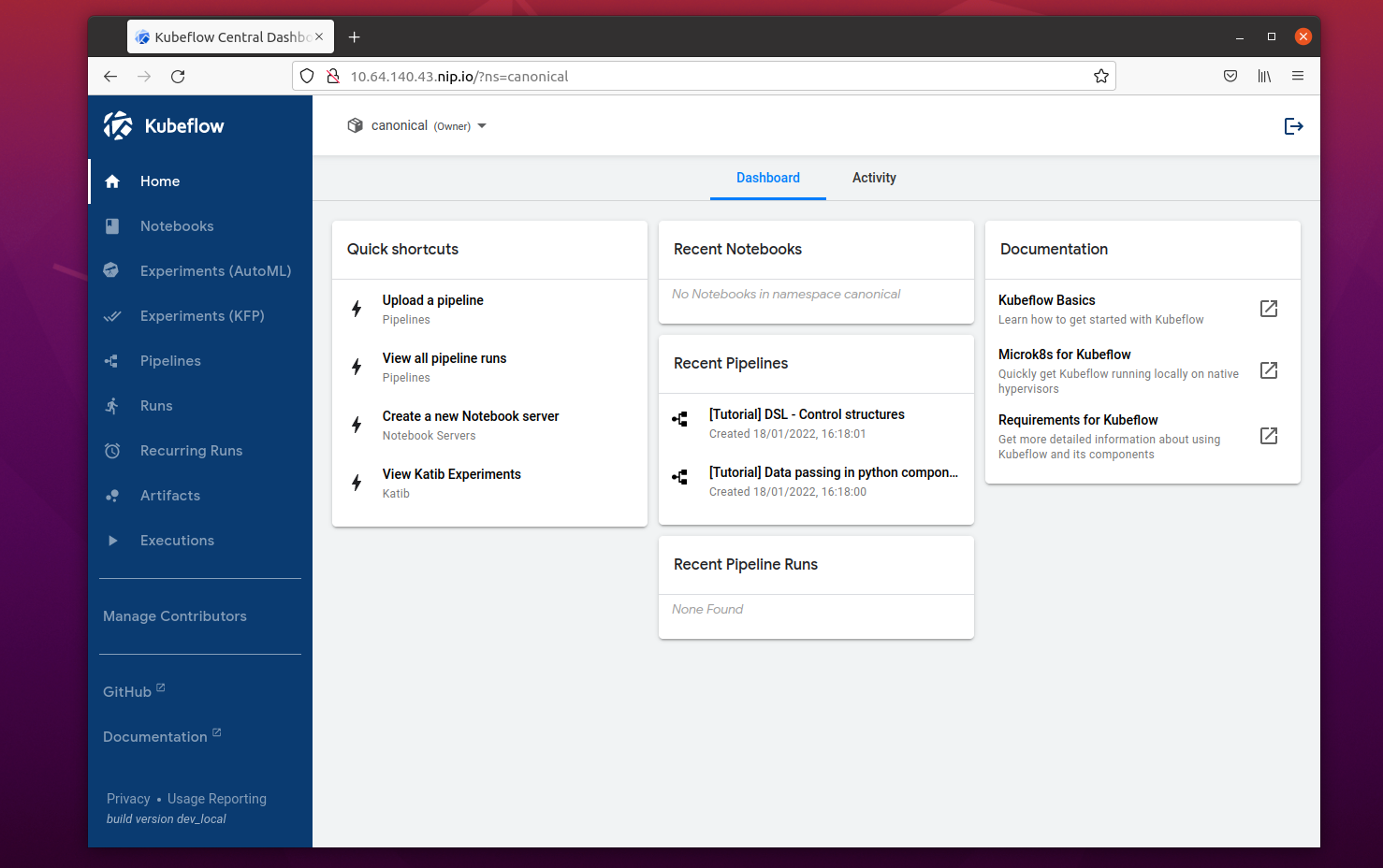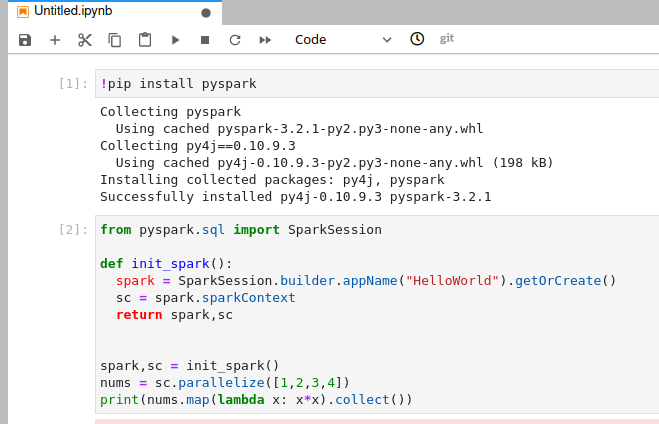Note: Superseded by Get started with Charmed Kubeflow | Documentation | Charmed Kubeflow . Please see that doc instead.
Ready to try out Kubeflow? This tutorial will guide you through the steps to get Kubeflow up and running with the minimum of hassle. To keep things simple, we are going to make the following assumptions:
-
You are running Ubuntu 20.04(focal) or later.
-
You have at least 16GB free memory and 50GB of disk space
-
You have access to the internet for downloading the required snaps and charms.
The fastest, simplest way to get started with Kubeflow is to set up a local Kubernetes with MicroK8s. The low overheads required by MicroK8s make it ideal if you are trying to squeeze Kubeflow onto a laptop or virtual machine for a quick experiment or working on the move.
Contents:
- Install and prepare MicroK8s
- Install Juju
- Deploying Kubeflow
- Configuration
- Accessing the Dashboard
- Did something go wrong?
Install and prepare MicroK8s
The first step on our journey is to install MicroK8s. MicroK8s is installed from a snap package. The published snap maintains different channels for different releases of Kubernetes. The current 1.6 release supports Kubernetes 1.22.
sudo snap install microk8s --classic --channel=1.22/stable
For MicroK8s to work without having to use sudo for every command, it creates a group called microk8s. To make it more convenient to run commands, you should add the current user to this group:
sudo usermod -a -G microk8s $USER
newgrp microk8s
It is also useful to make sure the user has the proper access and ownership of any kubectl configuration files:
sudo chown -f -R $USER ~/.kube
MicroK8s will start up as soon as it is installed. It is a completely functional Kubernetes, running with the least amount of overhead possible. However, for our purposes we will need a Kubernetes with a few more features. A lot of extra services are available as MicroK8s “add-ons” - code which is shipped with the snap and can be turned on and off when it is needed. We can now enable some of these features to get a Kubernetes where we can usefully install Kubeflow. We will add a DNS service, so the applications can find each other, storage, an ingress controller so we can access Kubeflow components and the MetalLB load balancer application. These can all be enabled simply at the same time:
microk8s enable dns storage ingress metallb:10.64.140.43-10.64.140.49
You can see that we added some detail when enabling MetalLB, in this case the address pool to use. Many of the add-ons have extra configuration options, which can be found in the MicroK8s documentation.
It can take some minutes for MicroK8s to install and set up these additional features. Before we do anything else, we should check that the add-ons have been enabled successfully and that MicroK8s is ready for action. We can do this by requesting the status, and supplying the --wait-ready option, which tells microk8s to finish whatever processes it is working on before returning:
microk8s status --wait-ready
Now we have a working Kubernetes ready, the next step is to install Juju.
Install Juju
Juju is an operation Lifecycle manager(OLM) for clouds, bare metal or Kubernetes. We will be using it to deploy and manage the components which make up Kubeflow.
As with MicroK8s, Juju is installed from a snap package:
sudo snap install juju --classic
As Juju already has a built-in knowledge of MicroK8s and how it works, there is no additional setup or configuration needed. All we need to do is run the command to deploy a Juju controller to the Kubernetes we set up with MicroK8s:
juju bootstrap microk8s
The controller is Juju’s agent, running on Kubernetes, which can be used to deploy and control the components of Kubeflow.
The controller can work with different models, which map to namespaces in Kubernetes. It is recommended to set up a specific model for Kubeflow:
juju add-model kubeflow
Model name must be Kubeflow:
Due to an assumption made in the upstream Kubeflow Dashboard code, Kubeflow must be deployed in the Kubernetes namespace kubeflow and so we have to use the model name kubeflow here.
That’s it for installing Juju!
Deploying Kubeflow
Charmed Kubeflow is really a collection of charms. Each of these charms deploy and control one application which goes to make up Kubeflow. You can actually just install the components you want, by individually deploying the charms and relating them to each other to build up Kubeflow. For convenience though, there are three bundles available. The bundles are really a recipe for a particular deployment of Kubeflow, configuring and relating the applications so you end up with a working deployment with the minimum of effort.
The full Kubeflow bundle will require a lot of resources (at least 2 CPUs, 16GB of free RAM and 50GB of disk space), so unless you know that’s what you want and have the resources to match, we recommend starting with the ‘kubeflow-lite’ bundle (the contents of the bundles are shown in the reference documentation ).
juju deploy kubeflow-lite --trust
Juju will now fetch the applications and begin deploying them to the MicroK8s Kubernetes. This process can take several minutes. You can track the progress by running:
watch -c juju status --color
This will show a list of the applications and their current status. Don’t be surprised if a few show up error messages to begin with - a lot of the components rely on the operation of others, so it can take some time before everything is ready and talking to one another.
While that is going in, there are two pieces of post-install configuration which can usefully be done at this point.
Configuration
For authentication and allowing access to the dashboard service, some components will need to be configured with the URL to be allowed. This depends on the underlying network provider, but for the known case of running on a local MicroK8s, we also know what the URL will be. It can be configured with Juju using the following commands:
juju config dex-auth public-url=http://10.64.140.43.nip.io
juju config oidc-gatekeeper public-url=http://10.64.140.43.nip.io
Finding the URL:
If you have a different setup for MicroK8s, or you are adapting this tutorial for a different Kubernetes, you can find the URL required by examining the IP address of the istio-ingressgateway service. For example, you can determinine this information using kubectl:
microk8s kubectl -n kubeflow get svc istio-ingressgateway-workload -o jsonpath='{.status.loadBalancer.ingress[0].ip}'
To enable simple authentication, and set a username and password for your Kubeflow deployment, run the following commands:
juju config dex-auth static-username=admin
juju config dex-auth static-password=admin
Feel free to use a different (more secure!) password if you wish.
Accessing the Dashboard
The URL for the Kubeflow dashboard is the same as the one determined earlier for the configuration steps - in the case of a default MicroK8s install, it’s: http://10.64.140.43.nip.io
From a browser on your local machine, this can be reached just by copying and pasting the URL. You should then see the dex login screen, where you should enter the username( it does say email address, but whatever string you entered to configure it will work fine) and your password from the configuration step.
You should now see the Kubeflow “Welcome” page:
Click on the “Start Setup” button. On the next screen you will be asked to create a namespace. This is just a way of keeping all the files and settings from one project in a single, easy-to-access place. You can choose any name you like…
Once you click on the “Finish” button, the Dashboard will be displayed!
More information on accessing the dashboard can be found in this guide.
Congratulations! You have just installed Kubeflow! You probably can’t wait to get started with exciting ML experiments, but be sure to also check out the Kubeflow basics tutorial to see an example of setting up pipelines and more.
Did something go wrong?
This section summarizes known issues and workarounds.
Kubeflow Dashboard can’t be accessed
Sometimes after accessing the URL specified in the Configuration section (juju config dex-auth public-url) the dashboard is not reachable (no response in the browser). This issue might be caused by a missing gateway resource in the cluster. You can list gateway resources in the cluster with microk8s kubectl get gateway -A. If the response is No resources found you can force the charm to create it the following way:
juju run --unit istio-pilot/0 -- "export JUJU_DISPATCH_PATH=hooks/config-changed; ./dispatch"
If you are running it on a VM instance in the public cloud, please go to the “Access dashboard section” from here.
Applications in an error state
Sometimes some applications in your Kubeflow deployment can be in an error state. You should see this with the juju status command. When this happens you can manually check the state of the pods in the cluster by running microk8s kubectl get po -n kubeflow. Pods are expected to be in Running status. If some pods are in CrashLoopBackOff you can further inspect the pod by checking the logs with microk8s kubectl logs -n kubeflow <name-of-the-pod>. If you see error messages like this one: “error”:“too many open files”` you can execute the following command on your host machine and the applications will slowly turn to active:
sudo sysctl fs.inotify.max_user_instances=1280
sudo sysctl fs.inotify.max_user_watches=655360
This behavior has been previously observed on pods of katib-controller, kubeflow-profiles, kfp-api and kfp-persistence




